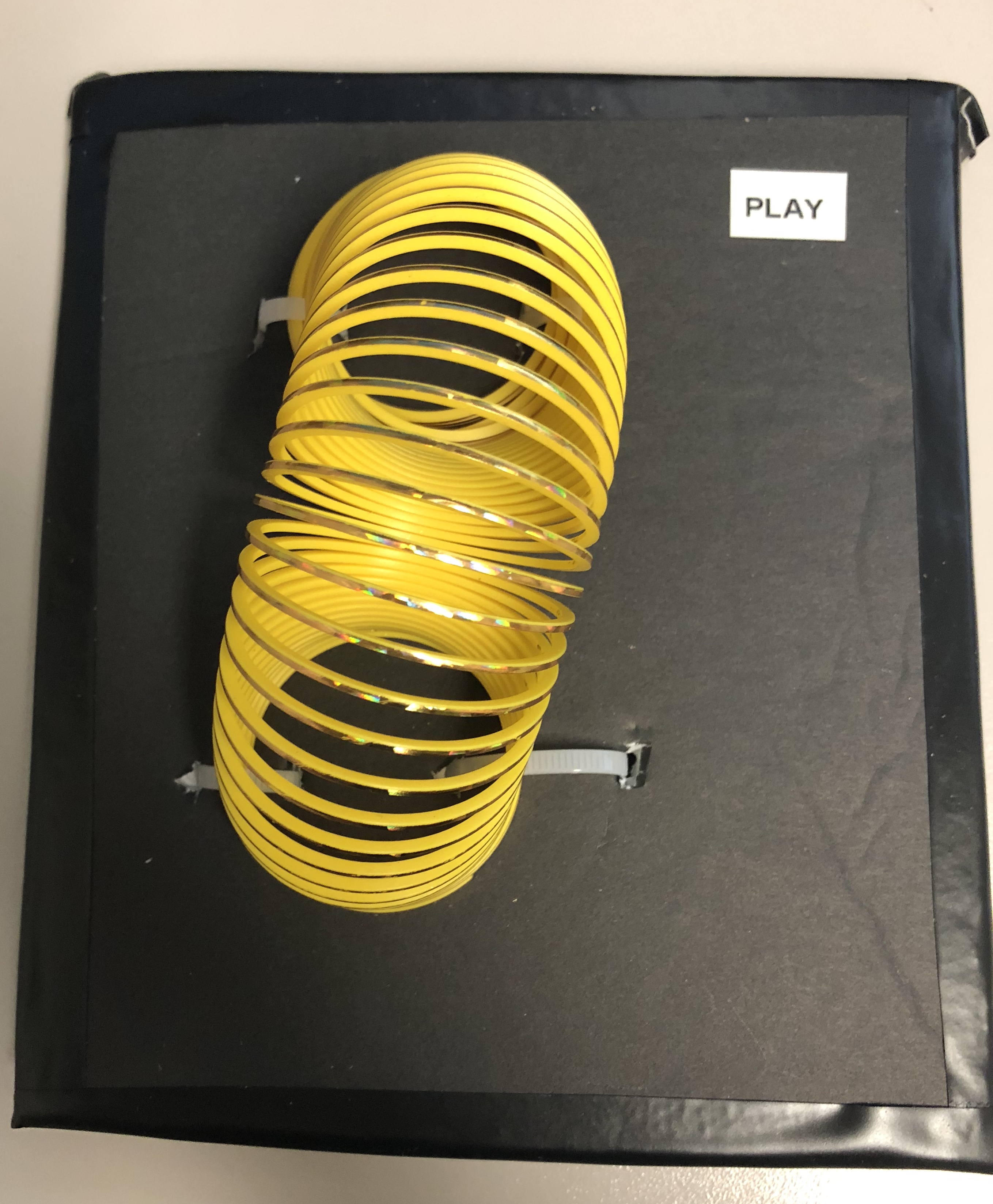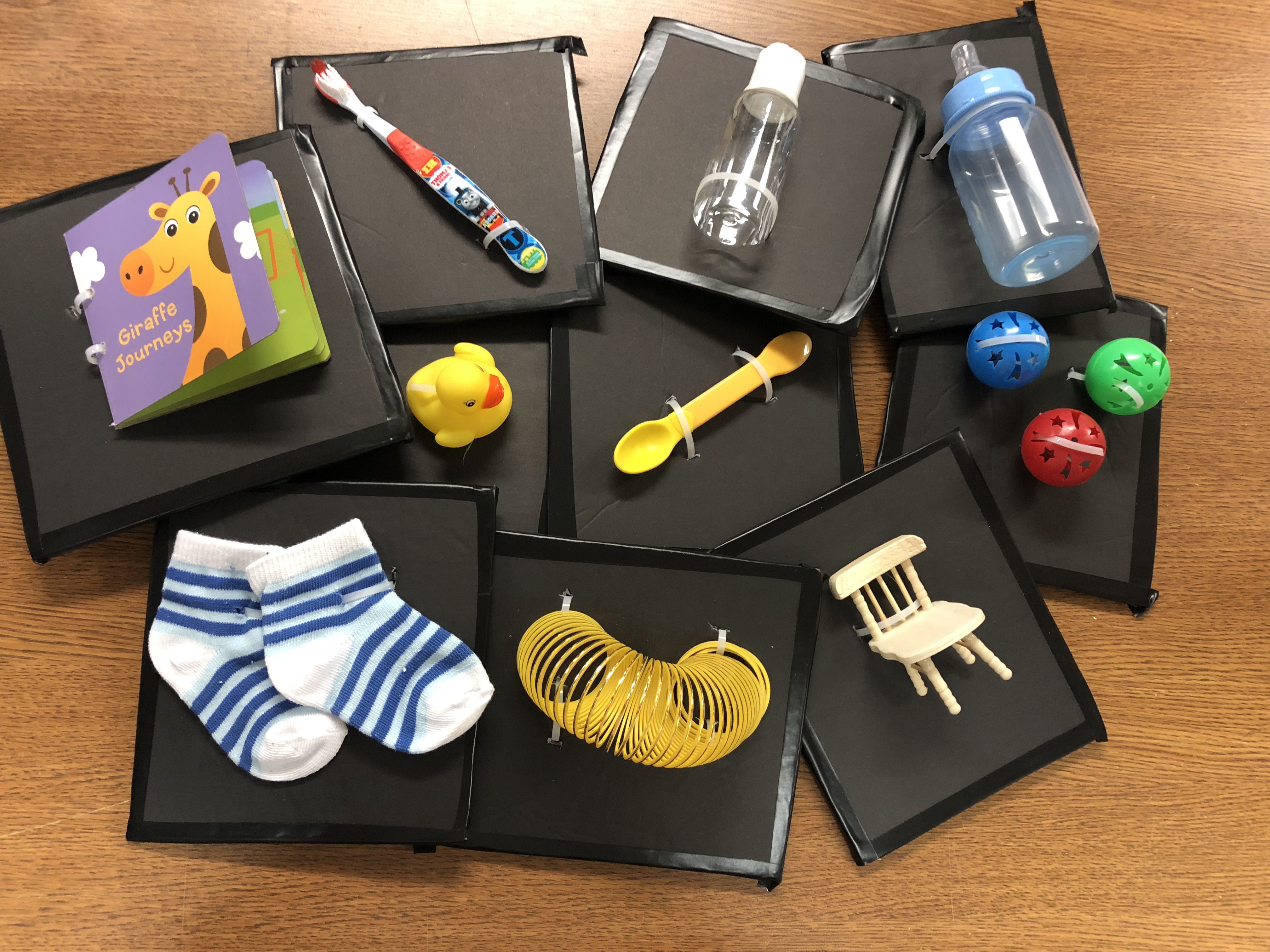DIY Tangible object symbols
12/3/2018 7:21 PM
The tangible object symbol as an speech and language pathologist with limited prep time or as a family member with a busy schedule can be the most intimidating to create in spite of all the benefits this representation may have. There are sets available online for purchase however the vocabulary contained in such sets may be lack for luster depending on your target patient, client, or population.
To make this project more do- able, I’ve created a list of materials and tools to do it yourself from when I created a set for one of my clients.This set cost ~$15 to create. Tangible object sets retail at ~$200 online
1. Plan your vocabulary set and targeted words in collaboration with client, family, and other team members. In the example I’ve included we were making a tangible object schedule to support transitions for a young toddler with hearing and vision difficulties.
2. Make a material list of items you will need in addition to the object symbols:
- high contrast board: black poster/foam board, cardboard with black insert. This will increase contrast and will support individuals with vision difficulties
- duct tape/electrical tape: this will protect the edges of the cardboard backing of the symbol
- zip ties: used to attach objects
- x-acto knife: used to cut poster board into rectangles and put holes in board for zip ties
- label maker: used to print text labels for communication partners
- Velcro: used to attach symbols to another surface in order to display
- puffy paint/glitter glue: used to create core vocabulary symbols.
3. Go to a dollar store: The dollar store is a magical place for tangible object symbols and other supplies and is generally a one stop shop. I was able to get all my materials in my list for about $15.
4. Assemble the symbols
- Measure and trace rectangles on high contrast that are likely large enough to mount your tangible symbols. Generally my symbol was 5 x 7 or 4 x 6 inches
- Use x-acto knife to cut out rectangles
- To protect edges from wear and tear, place black duct tape or electrical tape on the edges of the rectangle
- Secure object to board using 1-2 zip ties. Puncture holes in board in 2-4 spots and weave through. Cut the remaining plastic off after. Cover zip tie connection with duct tape to prevent wear and tear
General considerations when making:
Vocabulary decisions: It is easier to represent nouns with tangible objects than other core vocabulary function or action words. Trying to make abstract words 3-D and tangible is challenging and may require a combination of puffy paint foam and bright colors. If you are a lucky enough individual to have access to a 3D printer, the lovely people at project core (UNC) have open source code to 3D print tangible objects for core vocabulary words. This can be found at: 3D printed tangible object symbols.
Whenever possible include supports for vision:
- High contrast board with items that have color preference
- Reflective shiny objects
- Borders with preferred colors
To learn more about supports for CVI and other vision impairments. Refer to previous collection: AAC adaptations for CVI
How are the symbols going to be presented and stored:
Lack of Portability is one of the main reasons AAC devices and systems are abandoned.
- Reduce need to travel to different settings when possible: Instead of sending entire sets of symbols from school to home and vice versa. A set could be made for each location.
- Display that is also tangible: Tangible objects are hard to represent for clients who may have tactile sensation as their most reliable sensory input. When assembling consider how a person might differentiate one object from another by touch not only with textures but with positioning the items on the board. How will you display choices in a way that can be differentiated by your client. Field of 1 and scan through? On a velcro board in left and right visual field? Will there be a boarder in between choices? etc.
- Consistent storage location: independently accessing symbols when possible is the goal of any one supporting an individual with complex communication needs. Making the storage location consistent and when possible accessible and teaching your client this location as an operational competence will increase their overall independence when communicating wants, needs, and ideas.
These are just a few thoughts! Please share other things that have worked in the past!



This post is part of the collection
 0 likes
0 likes replies
replies





You’re welcome! Happy to share resources anytime :)
Deirdre Galvin-McLaughlin - 10/25/2019